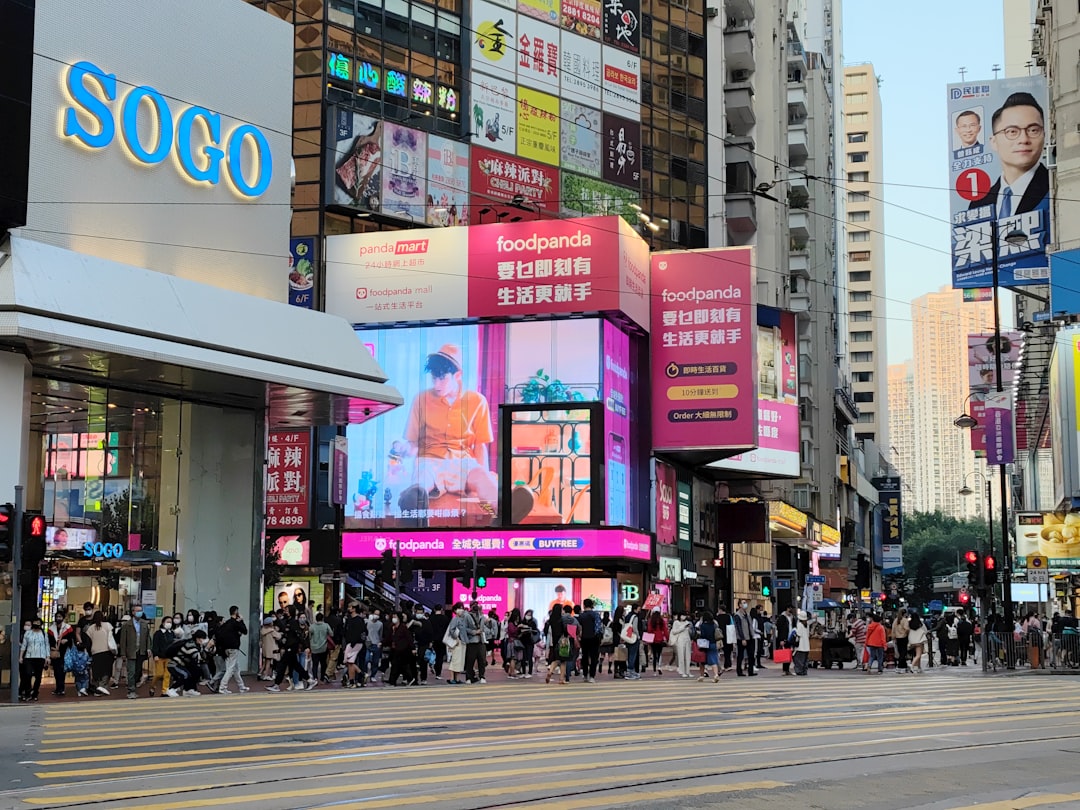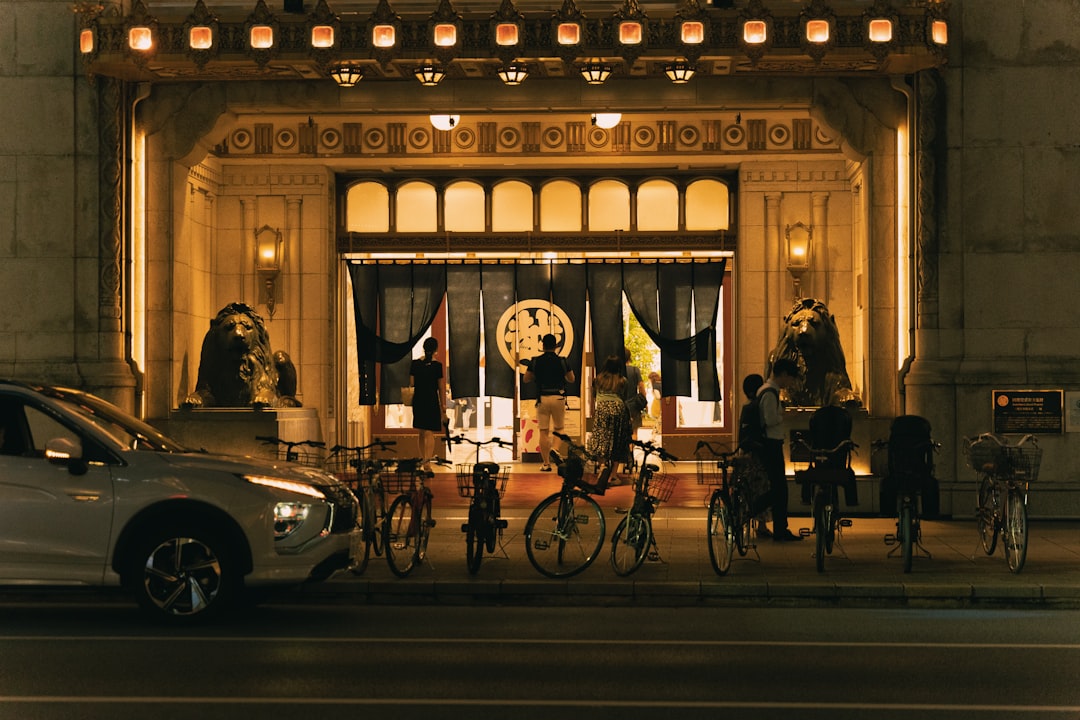

Engage prospects with a scan and streamline customer engagement with FREE QR code marketing tools by Sona – no strings attached!
Create a Free QR CodeFree consultation

No commitment

Engage prospects with a scan and streamline customer engagement with FREE QR code marketing tools by Sona – no strings attached!
Create a Free QR CodeFree consultation

No commitment
Department stores have long held a unique position at the intersection of commerce, culture, and community, shaping retail experiences for generations. Yet today, many are grappling with friction between physical and virtual engagement, missed customer opportunities, and challenges connecting in-store actions to digital follow-through. Amid evolving consumer expectations and competition from e-commerce, these iconic establishments are seeking ways to turn every shopper interaction into meaningful, actionable data. QR code marketing now stands out as a seamless digital bridge, uniting the tactile richness of the department store environment with the insight and agility of real-time analytics. It offers actionable ways to address the perennial pain of unknown visitor behavior and untracked interest, ensuring relevance and growth in the current marketplace.
From their origins as pillars of urban sophistication to their modern reinvention as interactive, hybrid shopping destinations, department stores have survived through adaptability. Many still find themselves missing high-value prospects, shoppers who might browse and leave without ever being tracked in the CRM, frustrating efforts to personalize outreach. The integration of QR codes is emerging as a strategic, data-driven answer to this challenge, creating measurable, low-friction connections between in-store visits and online engagement. This allows marketers to identify previously anonymous shoppers, surface interest at key decision moments, and tailor follow-ups based on real-world intent.
With priorities shifting toward sustainability, community impact, and omnichannel innovation, QR code technology empowers department stores to modernize outdated workflows, capture nuanced behavioral signals, and drive foot traffic with more targeted, personalized offers. This guide explores the strategic deployment of QR codes in marketing: capturing demand, tracking on-site behavior, and building robust, actionable audiences. Along the way, it will address common pain points and provide practical examples of how digital-first tactics are transforming department stores into adaptive, insight-led businesses.

Department store leaders often struggle with untraceable in-store engagement, missing out on valuable shopper data and limiting their ability to follow up effectively. QR codes are fundamentally transforming this paradigm by connecting offline actions to online destinations in real time. They put every surface to work: window displays, shelf talkers, fitting room mirrors, checkout counters, and escalator posters can all become interactive gateways to offers, style guides, and service bookings. With a clear call to action and dynamic destinations, scans translate curiosity into measurable intent.
Replacing analog processes with QR-enabled experiences reduces friction for customers and staff. Paper loyalty forms become instant digital sign-ups that pre-fill customer data. Printed brochures give way to mobile lookbooks and size guides that update without reprinting. Coupon clippings move to single-use, trackable digital offers. Even product returns and service requests can be launched via QR, directing shoppers to self-service portals or appointment booking pages. Modern platforms such as Sona QR add segmentation, retargeting, and automated routing, so every scan contributes to a growing pool of intelligence that powers smarter marketing. Start creating QR codes for free.

Many department stores are challenged by the gap between busy footfall and meaningful customer data, often lacking visibility into which visitors are truly engaged or ready to buy. QR code marketing addresses these blind spots by creating a measurable path from offline attention to online action. A shopper pausing at a designer handbag display can scan to check availability in a preferred color, save the item to a wishlist, or book an appointment with a personal stylist. Each action becomes a digital signal of intent that teams can nurture in the days that follow. See department store best practices.
Speed and simplicity are critical. Shoppers should not need to download an app to explore inventory or redeem an offer. A single scan can lead to a mobile-first experience that includes product information, price transparency, and fulfillment options such as buy online and pick up in store. Dynamic QR codes make it easy to keep messaging relevant and accurate. If an item sells out, the code can redirect to alternatives or a back-in-stock alert form, protecting the customer experience and preserving conversion potential.
Trackability makes the difference between guessing and knowing. With a platform like Sona QR, marketing teams can see scan frequency by department, time of day, and placement, revealing which assets and areas generate high-value engagement. Scans from window displays can be separated from in-store trials, while loyalty desk scans can be tagged for onboarding performance. This attribution enables ongoing optimization and ensures that follow-up campaigns reflect real behavior, not assumptions.
Choosing the right type of QR code is critical, especially as traditional methods often fail to capture nuanced engagement. Department stores benefit from formats that map to key customer actions, from product research to service bookings and loyalty enrollment.
Web links are the workhorse of in-store engagement, connecting shoppers to product pages, lookbooks, or limited-time offers within a tap. vCards allow personal stylists, beauty advisors, or customer service specialists to share contact details effortlessly. SMS and email codes compress long forms into simple tap-to-message flows that lower the barrier to feedback, appointment requests, or concierge services. Wi-Fi QR codes are particularly helpful for larger stores, improving in-store connectivity and enabling richer digital experiences at the shelf. App download codes route users to the correct app store while preserving attribution.

Opportunities for QR integration often arise where traditional tracking breaks down. Entrances, elevators, escalators, and checkout lines receive heavy foot traffic but rarely produce data. By placing clear CTAs with QR codes in these spaces, stores can transform passive browsing into measurable actions. For instance, a window displays sign at the entrance can route to a curated new arrivals page, then tag scanners for a follow-up email with size availability and styling tips.
Consider moments when intent peaks but assistance is scarce. Fitting rooms are prime real estate for QR experiences such as alternative color options, size availability, and styling advice. Beauty counters can use QR to invite skin consultations or capture shade preferences. Home goods and appliances can link to long-form demos, installation services, or extended warranty information. Directing these interactions through QR codes ensures each engagement is captured, attributed, and actionable. Explore in-store QR ideas.

Loyalty program enrollment is often constrained by inconvenient onboarding. QR codes streamline this with instant digital forms linked directly to CRM systems. Rather than relying on staff to secure a sign-up at checkout, customers scan a code at the entrance, kiosk, or receipt and complete sign-up on their phone. The store captures consent, preferences, and opt-ins without slowing the line.
Digital coupon redemption via QR improves tracking and simplifies promotions. Shoppers scan to unlock single-use coupons tied to loyalty IDs, preventing misuse and enabling precise attribution. For product education and sustainability insights, QR shelf tags or hang tags provide the depth that paper signage cannot. Tracking which products draw repeated scans surfaces content and merchandising opportunities that can improve conversion across categories.
A perennial challenge in the sector is that anonymous store visitors, often the highest-intent prospects, leave no digital trace. QR codes convert that anonymous curiosity into identifiable signals. By assigning unique codes to departments, fixtures, and campaigns, every scan informs a segmentation strategy that reflects real-world interest. A shopper scanning a sustainable textiles hang tag can be added to a green-conscious segment that receives content on eco-friendly lines and care practices.
Consistency in tagging and data routing is essential. Use dynamic codes that apply UTM parameters and campaign tags automatically, then sync these attributes to your CRM and ad platforms through Sona QR. This ensures that a scan in handbags triggers different follow-up than a scan in appliances. Over time, you build a library of behavior-based audiences that outperforms broad demographics in both relevance and conversion rate. See the Sona retargeting playbook.
Connecting physical initiatives to digital campaigns remains a challenge when engagement signals are not captured at every touchpoint. QR codes serve as connective tissue across media. Printed lookbooks and direct mail circulars can drive to curated landing pages with dynamic pricing and store availability. In-store digital signage can show rotating QR-led promotions that adapt to inventory or time-based offers, reducing friction and inviting immediate action.
QR also sharpens measurement. By attaching UTM parameters and campaign tags to each placement, you can compare performance across channels that were previously opaque: window posters versus escalator wraps, bag inserts versus receipt backs, influencer collaborations versus in-store promotions. Sona QR centralizes this data and connects it to downstream outcomes like appointments booked, wishlists created, and revenue attributed.
Launching a QR initiative is most effective when you define a clear outcome and align each element to that goal. The following checklist helps teams move from idea to measurable impact with minimal friction. Use it to replace analog processes, streamline the customer journey, and ensure data collection is automatic from day one.
Each step includes guidance tailored to department store environments, from window displays and shelf talkers to dressing room mirrors and bag inserts. Removing guesswork upfront accelerates execution and improves the quality of insights you will capture with Sona QR.
With these steps in place, your campaigns will capture intent at the source, feed it into your marketing stack, and iterate quickly toward better outcomes. The goal is not simply to increase scans but to translate them into enrollments, bookings, and revenue you can measure and repeat.
Department stores often struggle to connect in-store engagement to actual ROI, resulting in generic follow-ups and broad, unpersonalized outreach. Advanced QR management platforms now provide end-to-end traceability that links scans to downstream actions such as form fills, bookings, and purchases. This is core to offline attribution.
Sona QR and Sona.com create a unified view of the shopper journey. Sona is an AI-powered marketing platform that turns first-party data into revenue through automated attribution and data activation. Each scan is enriched with time, location, device, and source, then tied to email addresses, loyalty IDs, or CRM records when available. This enables identity resolution and multi-touch attribution, revealing how QR touchpoints contribute to pipeline and sales. With live dashboards, teams can shift offers, update destinations, and redeploy budget mid-campaign.
The result is a performance marketing engine rooted in real-world engagement. Scans become signals, signals form segments, and segments drive conversions. With robust analytics, you can prove the impact of QR initiatives and secure continued investment.
QR deployments succeed when they respect shopper context and deliver immediate value. Clear CTAs that promise tangible rewards, thoughtful placement at moments of decision, and seamless mobile experiences are the cornerstones of a strong program. Train associates to point out QR benefits and guide hesitant customers, then reinforce that human touch with automated follow-up. See retail QR trends.
As your program matures, look for creative applications that gather new intent signals without adding friction. Seasonal displays, reusable bags, and gift wrap inserts can all carry QR codes that extend the journey beyond the store. A well-timed scan trigger combined with SMS or email can tip a browsing session into a purchase, especially for high-consideration categories. Consider giveaways to keep engagement high post-visit.
Creative example: print QR codes on reusable totes that unlock monthly perks for VIP members. Another: place QR-enabled thank-you tags on gift wrap that invite recipients to join wishlists or claim an extended return window, creating a new entry point for acquisition.

Leading retailers are already translating QR curiosity into measurable outcomes. A European flagship placed garment tag QR codes on premium outerwear that linked to sourcing stories and care instructions. Shoppers who scanned were invited to save their size and preferred color, resulting in more accurate follow-up and an increase in cross-sell of complementary items like scarves and gloves. The team learned which content resonated most and expanded the approach to knitwear and denim.
In the United States, a national department store chain replaced paper loyalty forms with QR-enabled onboarding. Customers scanned at checkout or from receipts to complete registration in under a minute. Enrollment increased, data quality improved, and the company could track coupon redemption tied to first purchases, closing a long-standing attribution gap. Another chain used QR-activated pop-ups and local events to rekindle community engagement, adding RSVP tracking and digital post-event offers that lifted return visits.
These examples illustrate how QR codes can be woven into creative concepts that are both delightful and data-rich. The best programs start with customer value and build measurement and automation behind the scenes.
To maximize scan rates and data integrity, ensure QR codes are visible, well-branded, and always associated with clear, compelling calls to action. Keep the benefit above the fold, use high contrast, and provide enough whitespace for easy scanning. A small line of helper text such as No app needed can reduce hesitation and boost engagement.
Avoid placement and design mistakes that undermine adoption. Codes on low-contrast or reflective surfaces can frustrate users. Placing a code too high, too low, or too close to a walkway can make scanning awkward. Linking to slow or generic pages erodes trust and discourages future scans. Finally, failing to rotate content or archive learnings can reduce relevance over time.
Department stores are at a tipping point between tradition and transformation. QR code marketing, approached as a data-driven engagement strategy rather than a one-off tactic, enables retailers to convert every interaction into an actionable insight. It closes the offline-to-online gap, strengthens attribution, and empowers teams to personalize at scale while modernizing outdated workflows.
As digital transformation accelerates, the winners will be those who address untracked interactions, segmentation gaps, and unconverted high-intent leads head-on. With Sona QR, you can generate trackable codes, manage them centrally, and connect scan activity to your CRM and ad platforms. With Sona.com, you can attribute revenue through identity resolution and multi-touch models, turning scans into performance signals you can act on. Start creating QR codes for free.
QR codes have transformed department stores from traditional retail spaces into interactive, data-driven engagement hubs. Whether it’s attracting new shoppers, enhancing in-store experiences, or unlocking valuable insights on customer behavior, QR codes replace guesswork with real-time, actionable data that turns every display and promotion into a powerful conversion opportunity.
Imagine knowing exactly which in-store campaigns spark the most interest and driving personalized offers that keep customers coming back. With Sona QR, creating dynamic, trackable QR codes is effortless—you can update campaigns instantly without reprinting and link every scan directly to sales performance. No lost opportunities, just smarter strategies that boost both engagement and revenue.
Start for free with Sona QR today and transform every scan into meaningful customer connections and measurable growth for your department store.
QR codes connect offline actions to online destinations in real time, enabling shoppers to access offers, style guides, appointment bookings, and product information instantly, which reduces friction and personalizes the shopping journey.
QR codes help capture measurable shopper data, close the offline-to-online gap, enable dynamic content updates, improve loyalty enrollment, enhance product education, and allow personalized marketing through real-time tracking and segmentation.
National department store chains in the United States have adopted QR codes to replace paper loyalty forms and enable digital onboarding, coupon redemption, and event RSVPs, while European flagship stores use QR codes on garment tags for sourcing stories and care instructions.
QR codes provide detailed scan data including time, location, device, and campaign source, enabling marketers to segment audiences, track engagement by department and placement, and connect scans to CRM and sales data for accurate attribution.
Innovative uses include placing QR codes on fitting room mirrors for size and stylist advice, on hang tags for sustainability stories, enabling appointment bookings for beauty services, powering event RSVPs, and integrating QR codes into reusable bags and gift wrap for ongoing customer engagement.
Use Sona QR's trackable codes to improve customer acquisition and engagement today.
Create Your FREE Trackable QR Code in SecondsJoin results-focused teams combining Sona Platform automation with advanced Google Ads strategies to scale lead generation

Connect your existing CRM

Free Account Enrichment

No setup fees
No commitment required

Free consultation

Get a custom Google Ads roadmap for your business






Launch campaigns that generate qualified leads in 30 days or less.
